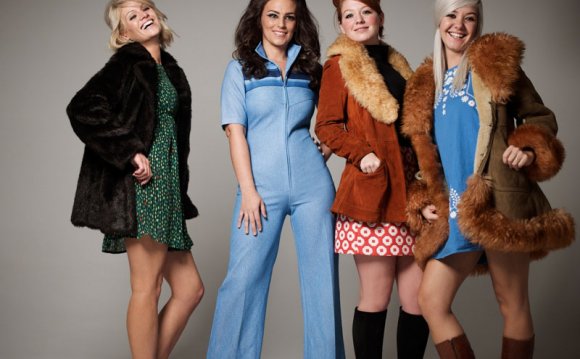
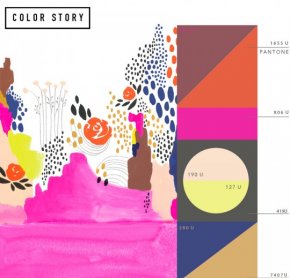
Starting a Collection: How to Develop Your Fashion Designs
by on in Apparel, Design, Design/Inspiration, Manufacturing
Developing your designs for a new collection involves 3 main components. When starting a collection, new designers need to consider their color story, design functionality, technical package, and garment patterns. Here’s the breakdown of each step in the design development process:
The Color Story
Generating a color story is very important. Your scheme could be monochromatic or complimentary, but no matter what story you choose, they must go well together.
Some designers select an image, or series of images, to display their color story. Others use forecasting services which offer a variety of different color swatches, silhouette, and textile forecasts. Once you select your first color story, you are able to utilize Pantone to develop color standards. Pantone functions as both a trend and color forecasting site. They are also the industry standard for identifying colors. Each color swatch is labeled and categorized with numbers and letters, allowing you to easily find the true color.
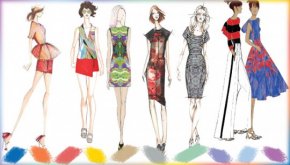
Design Illustration and Silhouette
Customer satisfaction and functionality plays a big role in designing a garment. The designer and product developer have to take into consideration what their customer desires in a specific garment. It could be anything from adding a back pocket on a cycling jacket or a forearm pocket for a runner’s phone. By balancing function with design, you create a garment that fits brand desires with customer wants and needs.
There really is a science to developing the silhouette of the garment. Large brands have the designers, fashion forecasters, merchandisers, and product developers work together to determine which direction they go. Smaller labels, where most positions are combined, should still take into consideration each position while moving from concept to technical sketch.
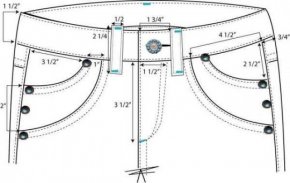
Technical Design and Tech Packs
The world of design is never as easy and glamorous as it looks. From demographic and trend research, finding your brand’s voice, and narrowing down your collection, the entire process can get a bit overwhelming. But, one of the most important pieces of the development puzzle is the Technical Design. Though many people do not know about this process, developing the technical sketch and technical package is essential to move onto Production.
The technical package is similar to the blueprint of the design. It shows graphic placement, points of measure, graded measurements, trim placement, seams, etc. Manufacturing a garment without a tech pack would be like putting together a puzzle without the picture on the front of the puzzle box. The factory would be assembling the pattern blind, making educated guesses where certain pieces go. No one wants to do that.
Costs for Tech Packs vary depending on the complexity of the garment, so it is important to do your research. It is not always about the lowest price, but the greatest value. There are typically three factors that determine which design studio and factory you chose: price, quality, and speed; and you can only can pick two. You will pay more for quality and speed, but you cannot have great quality, fast turnover, and a low price.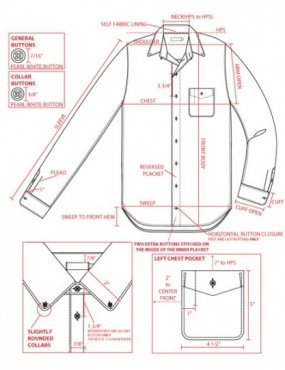 Deciding which two factors are most important will help you to choose your vendor.
Deciding which two factors are most important will help you to choose your vendor.
The industry standard for the development of technical illustrations is Adobe’s Illustrator. This program allows you to accurately work alongside the curves and seams of the garment. This vector based program ensures that details are captured without any grainy or pixilated lines.
Patterns and Grading
This is the last step in the development process. Garment patterns are the key ingredient to fit and styling. More returns happen because of fit issues than any other reason, especially among online sales. A well fit garment will also be worn more often and spend less time in your customers closet, which increases brand awareness and follow-up sales.
You can create patterns in two ways. The first, and easiest to work with, is digital patterns. These are created on a computer and able to be sent quickly and fairly easily between vendors. The second method is by hand drawing the pattern pieces. You are able to use either type of pattern when moving to production, however, each factory has different requirements, and so flexibility is key!
RELATED VIDEO




 Willis Tower (formerly named Sears Tower) is a 108-story, 1,451-foot (442 m) skyscraper in Chicago, Illinois. At the time of its completion in 1973, it was the tallest building in the world, surpassing the World Trade Center towers in New York, and it held this rank...
Willis Tower (formerly named Sears Tower) is a 108-story, 1,451-foot (442 m) skyscraper in Chicago, Illinois. At the time of its completion in 1973, it was the tallest building in the world, surpassing the World Trade Center towers in New York, and it held this rank...








